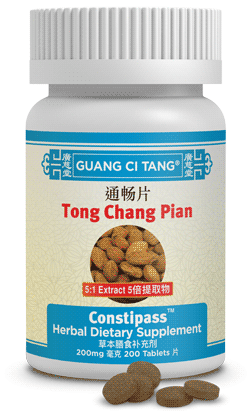Rhubarb in TCM: Purging Heat’s As Easy As Pie

No offense if you’re British. But let’s be honest. Traditional British cuisine doesn’t quite have the same mouthwatering gastronomic appeal that, say, Italian, Thai, and Mexican have. Who else but the Brits could have invented a pie made from rhubarb, a vegetable with crunchy stalks similar to celery with a sourness that rivals dill pickles? No wonder rhubarb pie only tastes edible when it’s loaded with sugar.
In Traditional Chinese Medicine, rhubarb is one of the most ancient and important herbs in TCM. And if your elimination is sluggish, finding relief with rhubarb might be as easy as pie.
Rhubarb In TCM
Unlike licorice root, Chinese dates, and ginseng, you won’t find rhubarb—Da Huang as it’s known in Chinese—on the list of top TCM herbs commonly used as food in China. In China, rhubarb pie is about as common as fish and chips in a Shangai food stall. Rhubarb as a culinary treat is a foreign concept to the traditional Chinese palate. But medicinally, rhubarb root has been a vital component in traditional Chinese medicine (TCM) for at least 2300 years.
“The rhizome of rhubarb was classified as a top medicinal plant, which can be traced back to 270 BC in an ancient Chinese book, “Shen Nong Ben Cao Jing, says a comprehensive study of Da Huang’s pharmacological properties and clinical applications published in the journal, Chinese Medicine (a peer-reviewed entity of Springer Nature’s BMC Public House).
The Shen Nong Ben Cao Jing emphasizes rhubarb’s ability to purge stagnant energy and promote healthy digestion. To this day, Da Huang is one of the most widely-used herbs in China for constipation, purging excess heat, and clearing toxins.
Rhubarb is also mentioned in The Yellow Emperor’s Inner Classic (Huangdi Neijing). The Huangdi Neijing describes rhubarb as helping to restore balance and harmony within the body, especially when experiencing digestive disorders and Liver channel imbalances.
Rhubarb Uses in TCM
Heat Purging
Stress got your bowels in an uproar? Struggling to pass a beautiful bowel movement? Blame it on the heat! In TCM, the term “Heat” not only applies to a physical sensation brought on by hot weather or another external factor. Heat also describes an internal condition in the body. Organ imbalances, excessive anger, poor diet, emotional stress, Yin deficiency, and Qi or Blood deficiency can cause heat. Regardless of the root cause, the inability to pass a productive bowel movement is one of the most common internal Heat symptoms.
This is where Chinese rhubarb root/Da Huang may come to the rescue. In TCM theory, rhubarb purges heat, which may also manifest as bad breath, profuse sweating and thirst, fever, canker sores, red eyes, nosebleeds, a heavy pulse and a thick, yellow tongue coating.
Da Huang is included in many ActiveHerb.com formulas for its fire-draining and heat-purging properties. Here are just a few of those time-tested formulas:
- UTFlow (urinary tract support)
- NeuroSoothe (stress-relief support)
- Weitalite (metabolism and skin support)
Perhaps the Brits were onto something when they started making pies from rhubarb stalks in the 1600s. According to TCM theory, the plant’s extremely tart flavor profile is believed to have a cooling effect, helping to counteract excessive heat.
Resolving Liver Qi Stagnation
When energy is stuck in the Liver channel, this Liver Qi stagnation can cause emotional and mental disharmony. Consequently, anger, bitterness, jealousy and other negative moods can arise. Rhubarb supports the smooth flow of Qi in the paired Liver/Gallbladder meridians. Eating pie makes one happy. But once the sugar buzz wears off, your Liver Qi stagnation is still there.
Is It Safe To Take Rhubarb Long-Term?
The vast majority of traditional Chinese herbs are generally considered safe when manufactured using the strictest quality assurance standards. Da Huang, however, is an exception. This is because rhubarb possesses orange, red, or brownish-red plant compounds called anthraquinones. When used long-term as a laxative, anthraquinones—also found in aloe, alder tree bark, cascara tree bark, and senna leaves and fruit—may cause harm to the endothelial lining of the colon. Because Da Huang is such an effective laxative, it has the potential for abuse; after all, some people want short-term solutions for weight loss.
Therefore, rhubarb is not suggested as a long-term laxative, and most TCM practitioners will recommend a formula for elimination that contains Da Huang, such as Tong Chang Pian (Constipass), rather than prescribing rhubarb on its own. The other herbs in Tong Chang Pian balance rhubarb’s heat-purging effects.
Chinese Rhubarb vs. Western Rhubarb
Both Chinese and Western rhubarb share a similar botanical classification. But there are differences between the two. Da Huang comes from Rheum palmatum and Rheum officinale, while culinary rhubarb derives from Rheum rhabarbarum.
Rhubarb’s significance in TCM is deeply rooted in history and continues to be a valuable herb in modern TCM practices. Whereas in the West, rhubarb is deeply rooted in sugar. Recently, Chinese rhubarb has been the focus of research. According to the Memorial Sloan Kettering Cancer Center, rhubarb is supported by limited human studies that suggest the herb can “improve feeding tolerance and relieve gastrointestinal dysfunction in very ill patients.”
Furthermore, rhubarb “may also reduce excess blood levels of pancreatic enzymes and pancreatitis events caused by some procedures” and may help with mouth sores, among other benefits, although additional studies are needed to determine safety and effectiveness.
Whatever you do, however, stay clear from rhubarb leaves, which may contain a high amount of oxalates, compounds that can interfere with mineral absorption. This is why in TCM, rhubarb root is used. And make sure not to have too much rhubarb pie. Rhubarb is a healthy veggie, but not when it’s doused in sugar.
Do you use any TCM formulas with rhubarb (Da Huang)? Does it work for you? Leave a comment.








